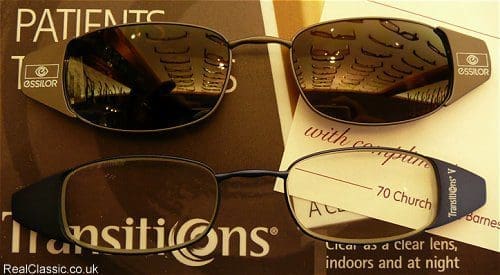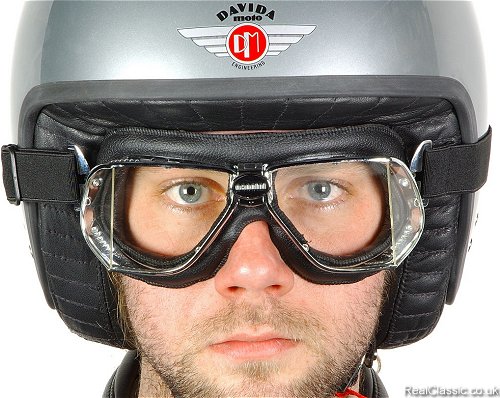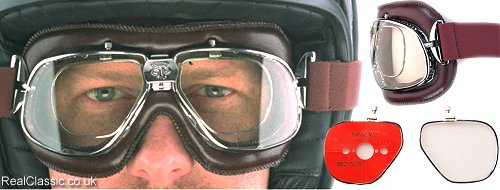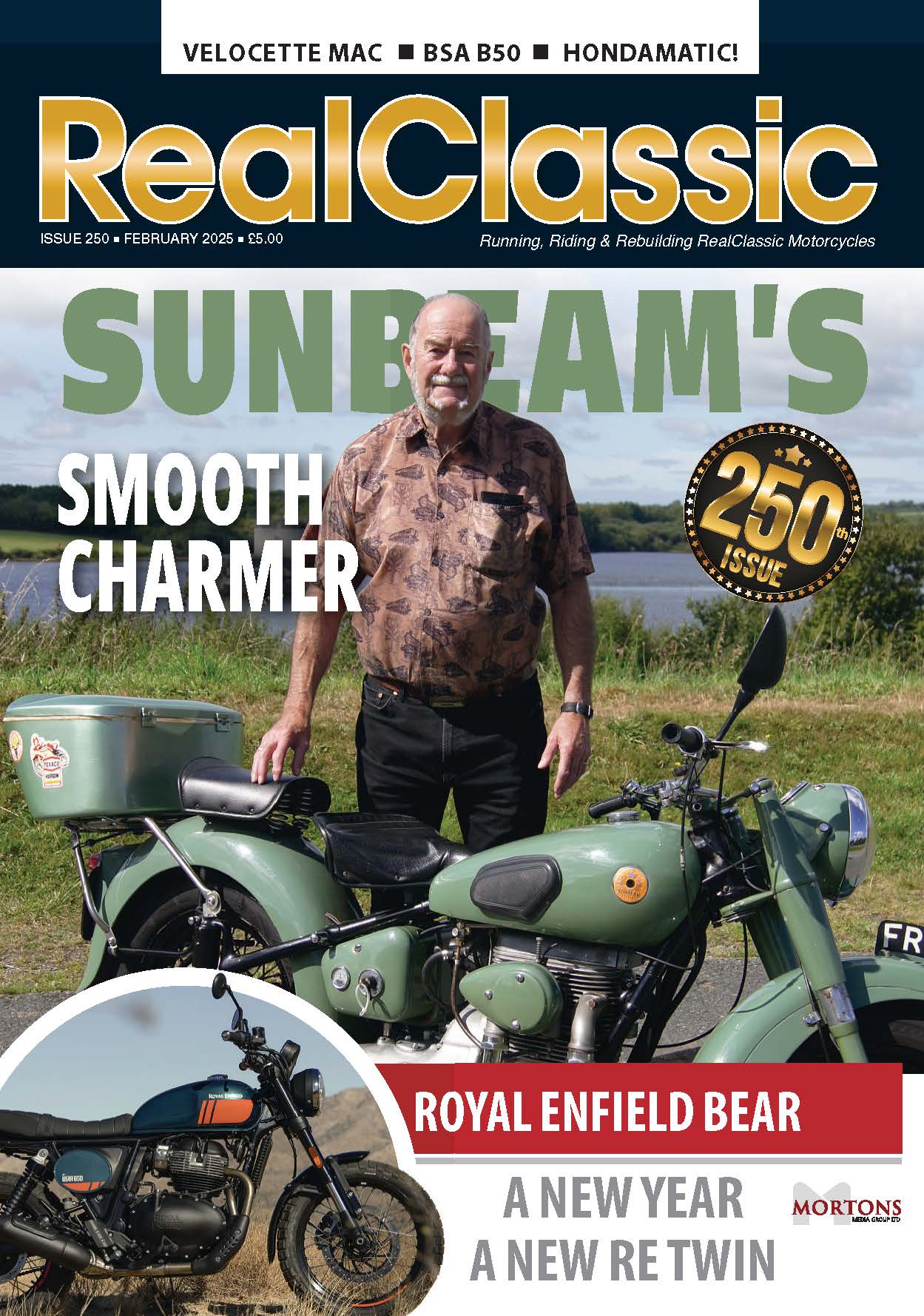
All roads users need clear vision to drive or ride safely. Classic riders frequently suffer from deteriorating vision, too. Paul Miles, RC’s resident professional eye expert, continues his explanation and considers lenses, goggles and visors…
To get the best results from this professional advice, you really need to have read Parts One and Two, so go back and do it now if you haven’t already!
My eyes are terrible, so won’t I need three pairs of spectacles, Doctor Paul?
Some folk are just lucky and will only need spectacles for long distance ie. Riding. Others will be less blessed and require reading glasses as well. Rumour has it that the sun might shine occasionally, so you might need glasses to help you out there, too. Pretty much anything we’ve discussed can be made with darkened or ‘smoked’ lenses, but there is a catch. Once you’ve arrived at your destination you’ll need to swap to a clear pair, or hope it remains sunny all day as you stay outside and be home by dusk.
An alternative are those clever lenses that go dark automatically. Called photochromatics and variously ‘phonographics / radioactives / rapideolites / transvestolites’ by would-be purchasers, the current market leader is Transitions. Now up to their sixth generation, hence Transitions VI, these lenses are effectively clear at night (with a residual tint of less than 5%) and darken to nearly 90% in full sunlight.
They are simply brilliant and render conventional sunglasses almost obsolete, especially to the rider who travels light (ho ho). Other brands are available, but work far less well in our experience. ‘But what about when you go in a tunnel?’ is the oft-uttered question we hear. Well, there aren’t that many tunnels in the UK and you’re no worse off in Transitions than you would be in sunglasses. They also work well inside a visor, so you won’t need a tinted one, unless you like to look mysterious. In a car they darken to 50% tint, the windscreen absorbs the rest of the U/V.
If you need dual purpose lenses, for distance and reading, then you can have either bifocals or progressives. Bifocals have two sections, a pellet in the lower lens area for reading things, if you like. These were invented by Benjamin Franklin, of kite flying fame, way back in the day when most riders only had one horsepower to control: they belong in a museum now, too. The sudden judder as your eye passes from one zone to the other can be as unsettling as it is dangerous whilst riding. Not recommended.
|
|
Goggles on Right Now…… |
Progressives, or varifocals as your Optician’s granddad would have called them, have a blended lens that moves seamlessly from distance, through intermediate and finally to reading at the bottom of the lens. Early designs were a little crude and I still hear yarns from people that know someone whose next door neighbour had a pair and didn’t succeed with them. The best progressive lenses these days are a guaranteed fit and come in a range of concepts; for riding I’d usually advise a pair with a strong distance bias and a small amount of reading. There is a photo that shows the usable viewing area of three different designs, the frosted bits are the distorted areas (or unwanted astigmatisms and you might be able to see the shortcomings of the basic designs.
If you don’t get on with your new progressives it’s because you’ve a) been poorly advised as to the most suitable design for you, or b) been badly fitted by your optician. In the olden days we used to measure you with a ruler which we waved around a bit, or with a felt tip pen with which we blobbed a mark on the dummy lens in the frame. A modern, competent optician will now be using a fully electronic measuring system, such as the Visioffice I mentioned earlier. If they’re not, go elsewhere. I use a pair of progressive lenses, the Varilux Physio 360 degree, fitted with the hi-def design aforementioned and can use them in the workshop, on the computer and when riding, with no difficulties at all. If I can, then so can you.
What about those Biggles goggles?
If you really have to. A few manufacturers make goggles that are prescription ready. They usually have an inner rim, just behind the main glass (and yes, often it’s still GLASS). This inner rim can be fitted with distance lenses, always polycarbonate, just to give you a chance of not being blinded by splinters if you fall off. What you end up with though, is four reflecting surfaces, none of them coated or high tech, between you and the outside world. It’s better to wear a decent pair of spectacles, honestly it is.
Some of the best thought-out designs come from the Italian manufacturer, Nannini and have polycarbonate lenses. It wouldn’t be reasonable to expect your optician to stock them, though. In our practice we’re very proactive and yet still only sell about three pairs a year — most opticians wouldn’t expect to sell any. I would suggest that you buy them online and then take them to your optician to be glazed with your personal prescription. Davida and Halcyon both stock the Nannini range and they are available to view online.
So, Doctor Smartypants, I suppose you know all about visors, too?
Well yes, I do. Visors should be clear and clean, change them at least once a year as the myriad of small scratches significantly impairs your vision; remember how clear it all seems when you first wear a new helmet. The pinlock/Fogclear double glazing inserts are very good, but not recommended for night riding due to increased glare, and you should NEVER ride with a dark visor after dusk. The recommended maximum tint is 15% and the darkest legal visor has a tint of 50%.
Iridium (the shiny metallic) visors are generally a mirror coating added to an already darkened visor. These often have a tint in excess of 95% (making them a category 4 tint-suitable for high mountain use only) and are illegal for daytime riding, let alone at night!
Clean your visor regularly, clean your specs even more often, treat them like a camera lens. Don’t use washing up liquid or Swarfega as these damage the coatings. Buy a small bottle of suitable lens cleaner and some of the single use tissue wipes for when you’re out riding. Remove dead flies by laying wet kitchen paper on the visor for an hour then simply wiping off and clean it properly afterwards.
——
Next time: Dr Paul talks about contact lenses and (gulp) surgery…
——–
Goggles pic courtesy of www.davida.co.uk







